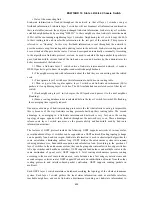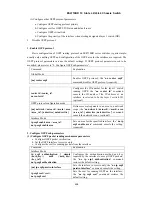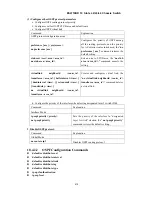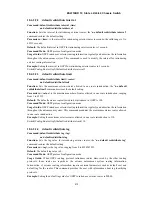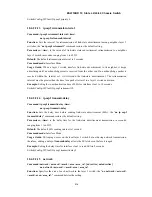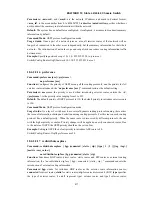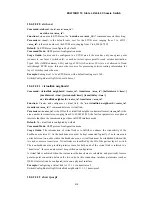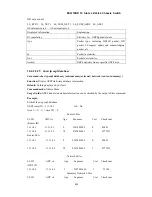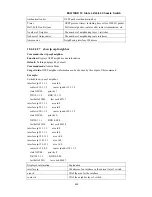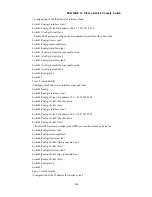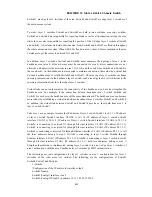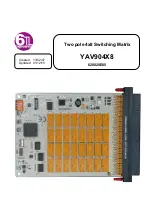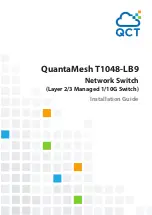
419
E
ES4710BD 10 Slots L2/L3/L4 Chassis Switch
18.4.2.2.20 stub cost
Command: stub cost
<cost>
area
<area_id >
no stub area
<area_id >
Function:
Sets an area to STUB area; the “
no stub area <area_id >”
command cancels the setting.
Parameters:
<cost>
is the default route cost for the STUB area, ranging from 1 to 65535;
<area_id>
is the area number of the STUM area, ranging from 1 to 4,294,967,295.
Default:
No STUB area is configured by default.
Command Mode:
OSPF protocol configuration mode
Usage Guide:
An area can be configured to a STUB area if the area has only one egress point
(connect to one layer 3 switch only), or need not select egress point for each exterior destination.
Type4 LSA (ASBR summary LSA) and type5 LSA (AS exterior LSA) are not allowed to flood
into/through STUB areas, this saves the resource for processing exterior routing information for
layer 3 switches inside the area.
Example:
Setting area 1 to be a STUB area with a default routing cost of 60.
Switch(Config-Router-Ospf)#stub cost 60 area 1
18.4.2.2.21 virtuallink neighborid
Command: virtuallink neighborid
<router_id>
transitarea
<area_id>
[hellointerval
<time>
]
[deadinterval
<time>
] [retransmit
<time>
] [transitdelay
<time>
]
no virtuallink neighborid
<router_id>
transitarea
<area_id>
Function:
Creates and configures a virtual link; the “
no virtuallink neighborid <
router_id
>
transitarea <
area_id
>
” command deletes a virtual link.
Parameters:
<router_id>
is the ID for the virtual link neighbor in decimal format;
<area_id>
is the
area number for transit area, ranging from 0 to 42,949,67,295; the last four parameters are optional
intervals that have the same meaning as those in OSPF interface mode.
Default:
No virtual link is configured by default.
Command Mode:
OSPF protocol configuration mode
Usage Guide:
The introduction of virtual link is to fulfill or enhance the connectivity of the
backbone area (area 0). As the backbone area must be kept connected logically, if no in-area route
exists between two nodes within the backbone area, a virtual link must be established between the
two nodes across a transit area. Virtual links are identified by the ID of the partner layer 3 swtich.
The non-backbone area providing interior route for both ends of the virtual link is referred to a
“transit area”, the area number must be specified on configuration.
A virtual link is activated when the route across the transit area is calculated, and practically forms a
point-to-point connection between the two ends. In this connection, interface parameters (such as
HELLO interval) can be configured just as on a physical interface.
Example:
Configuring a virtual link to 11.1.1.1 via transit area 2.
Switch(Config-Router-Ospf)#virtuallink neighborid 11.1.1.1 transitarea 2
18.4.2.2.22 show ip ospf

